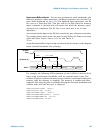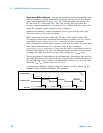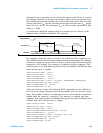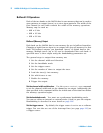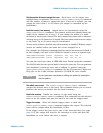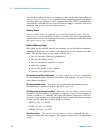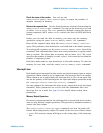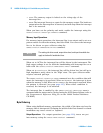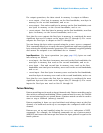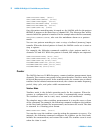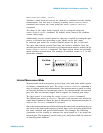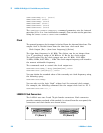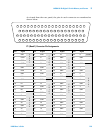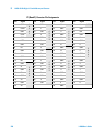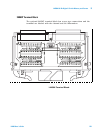L4450A 64-Bit Digital I/O with Memory and Counter 8
L4400 User’s Guide 215
For output operations, the data stored in memory is output as follows:
• BYTE output - first byte in memory on the first handshake, next byte in
memory on the second handshake, and so on.
• WORD output - first and second byte in memory on the first handshake, next
two bytes in memory on the second handshake, and so on.
• LWORd output - first four bytes in memory on the first handshake, next four
bytes in memory on the second handshake, and so on.
Note that for WORD outputs the first byte in memory is considered the most
significant byte and is output on the upper bits (15 through 8). For LWORd
outputs the first byte is output on bits 31 through 24.
You can change the byte order reported using the
FORMat:BORDer command.
This command allows you to swap the most- significant and least- significant
byte ordering for all data transfer operations. The command is applied globally
and cannot be assigned to an individual slot or channel.
Input Operations For input operations (see page page 212), bytes are read
into memory as follows:
• BYTE input - the first byte in memory was read on the first handshake, the
next byte in memory was read on the second handshake, and so on.
• WORD input - first and second byte in memory were read on the first
handshake, next two bytes in memory were read on the second handshake,
and so on.
• LWORd input - first four bytes in memory were read on the first handshake,
next four bytes in memory were read on the second handshake, and so on.
Note that for WORD inputs the first byte in memory is considered the most
significant byte and was read on the upper bits (15 through 8). For LWORd
inputs the first byte was read on bits 31 through 24.
Pattern Matching
Pattern matching can be used on input channels only. Pattern matching can be
done with or without handshaking. When a pattern match occurs, the L4450A
can set an interrupt line or system alarm. A pattern match can also be used to
start or stop a buffered (memory) transfer.
Pattern matching is done on a per bank basis and always starts at the first
channel of a bank and works up to encompass the configured width of the
channel.
Patterns are set up and enabled using the
CALCulate subsystem of SCPI
commands. For example, the following commands set up a pattern match
(#HF00F) and assert the interrupt line when the input pattern is equal to the
match pattern.



